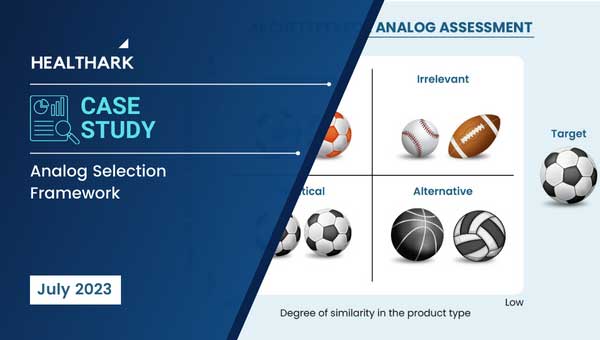Analog Selection Framework
Background
The client is a nonprofit organization that focuses on women’s health. The organization has a team of experts in drug development, clinical research, and advocacy to develop and deliver innovative products and services that meet the needs of women. The organization also collaborates with other companies to expand its product portfolio and increase its geographical footprint.
Project Brief/ Ask
The client wanted to assess a potential partner company and needed help with commercial due diligence and risk assessment for an under-development pessary product. The ask was to analyze the current market situation, build a revenue forecast model, and perform market sizing to evaluate the product.
However, there were certain challenges while addressing the client’s request. There are no FDA-approved medications or devices for preventing preterm birth in the US market. This means that there were no direct competitors for pessaries. There was also one device that was being used for research and off-label use to prevent preterm birth, but this device is not FDA-approved. The other key players were manufacturing identical-looking products, but for different indications.
To address these challenges, we used a framework, called the analog selection framework. This matrix helped us choose appropriate analogs for comparison and played a key role in assessing the product’s strategic alignment with the client’s goals.
Overall Solution
Conducted detailed research of assets based on epidemiology of indication, unmet needs, and expected growth to provide a comprehensive document of asset overview. Conducted competitive benchmarking of assets by considering factors such as product characteristics, type of indication, regulatory environment, social impact, profitability, competitive landscapes, etc. Furthermore, developed a market size summary with segmentation and growth analysis, covering both current and forecasted data.
Healthark’s Role
We conducted the asset due diligence to pressure test and validate the current market situation, and estimated the market size of the product. Since there was no direct competitor of the product, using analogue selection framework matrix, we classified 4 categories:
1.Identical: Similar indication, similar product type
2.Homogenous: Different indication, similar product type
3.Alternative: Similar indication, different product type
4.Irrelevant: Different indication, different product type
Once the analogs were plotted, we identified the best suited competitors based on the input parameters (adoption curve, pricing, cost of sales, Opex, market access) for our forecast model. For instance, the competitors falling in “Identical” quadrant helped determine all the differentiators, while the competitors falling in “Homogenous” quadrant helped estimate cost of sales and pricing, whereas, analogs in “Alternative” quadrant helped assess adoption curve, pricing, Opex, and market access.
Outcomes
Our team analyzed all possible options and approaches to estimate the potential market size and strategic fitment of the product, as the market was challenging to assess it accurately. We also evaluated the product’s alignment with the target company’s corporate strategy, commercial synergies, and R&D synergies.




